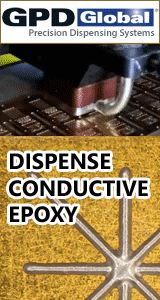Printed Circuit Board Assembly & PCB Design Forum
SMT electronics assembly manufacturing forum.
- SMTnet
- »
- Electronics Forum
- »
- Clean vs No-Clean
Clean vs No-Clean
Views: 3915
![]() Hi
We are designing a new pcb which contains sensitive an...
- Sep 08, 2008
by
Adam
Hi
We are designing a new pcb which contains sensitive an...
- Sep 08, 2008
by
Adam
![]()
![]()
![]() Because of our high volume production, we use no clean flux....
- Sep 08, 2008
by
blnorman
Because of our high volume production, we use no clean flux....
- Sep 08, 2008
by
blnorman
![]()
![]()
![]() Here are links to articles on that subject:
Can You Clean...
- Sep 08, 2008
by
Michael
Here are links to articles on that subject:
Can You Clean...
- Sep 08, 2008
by
Michael
![]()
![]()
![]() �Another direct measurement to determine resistivity values ...
- Sep 08, 2008
by
davef
�Another direct measurement to determine resistivity values ...
- Sep 08, 2008
by
davef
![]()
![]()
![]() Try the "straw test" to test for ionic contamination. For r...
- Sep 09, 2008
by
Dirk Nuendyke
Try the "straw test" to test for ionic contamination. For r...
- Sep 09, 2008
by
Dirk Nuendyke
![]()
![]()
![]() Oh that's GREAT. Now, we're encouraging engineers blow to sa...
- Sep 09, 2008
by
davef
Oh that's GREAT. Now, we're encouraging engineers blow to sa...
- Sep 09, 2008
by
davef
![]()
![]()
![]() Wow, the anger grows deep within this one.
Why not build ...
- Sep 09, 2008
by
WaveMasterLarry
Wow, the anger grows deep within this one.
Why not build ...
- Sep 09, 2008
by
WaveMasterLarry
![]()
![]()
![]() I guess sarcasm and quick wit flies over some peoples' heads...
- Sep 10, 2008
by
Dirk Nuendyke
I guess sarcasm and quick wit flies over some peoples' heads...
- Sep 10, 2008
by
Dirk Nuendyke
![]()
- SMTnet
- »
- Electronics Forum
- »
- Clean vs No-Clean







